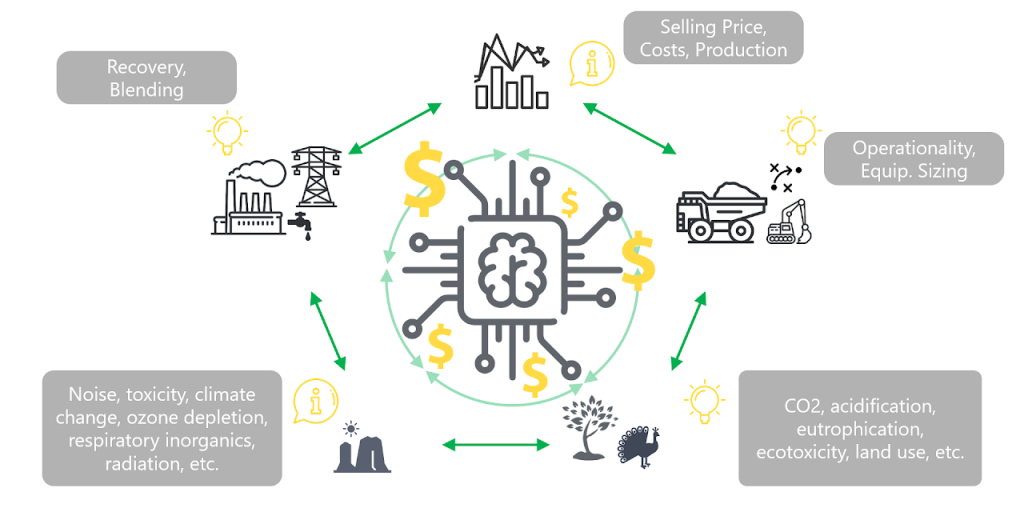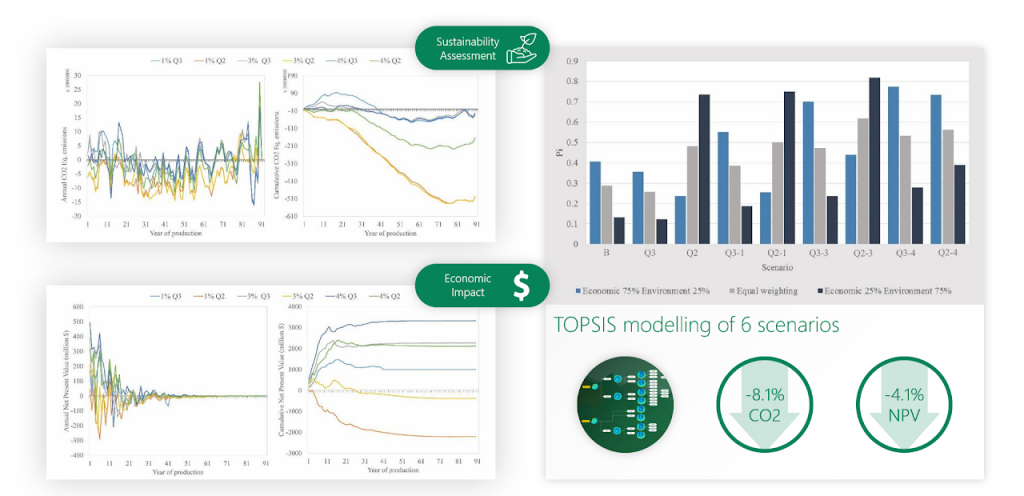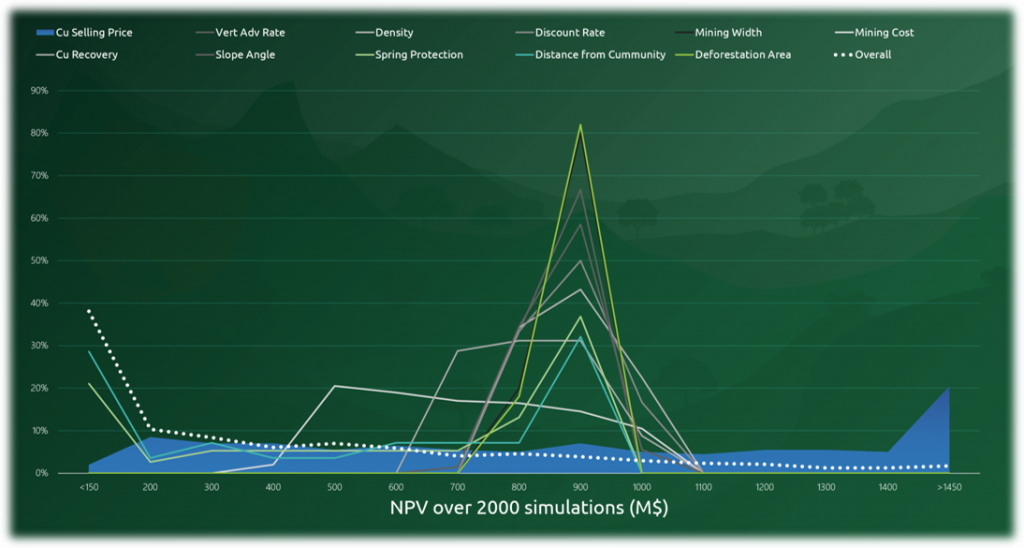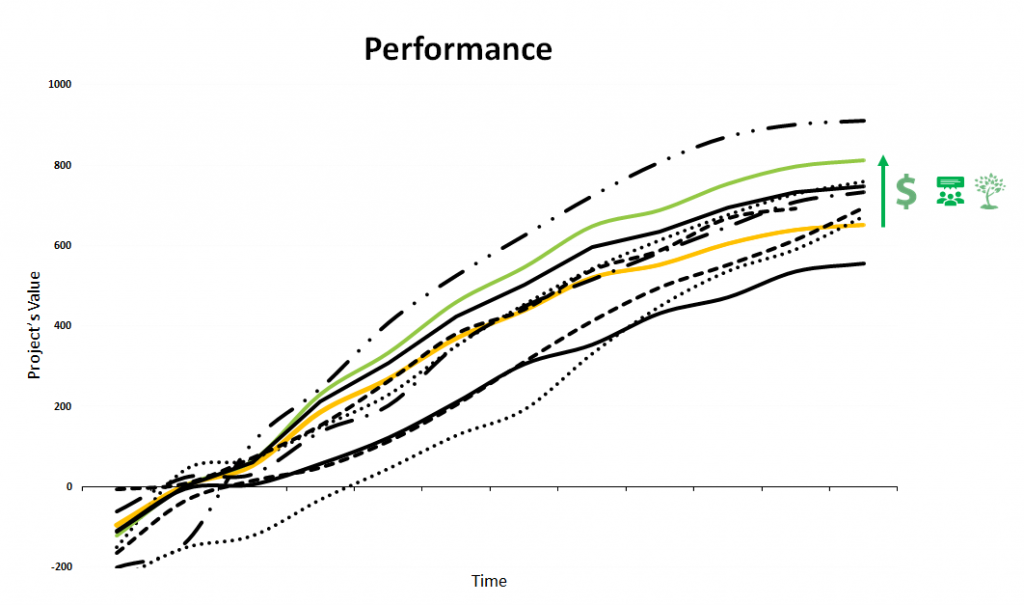Sustainable analysis
Highlights
In mining operations, integrating socio-environmental constraints into optimization models is critical to balance economic and non-economic objectives in real-world scenarios.
- Enables simultaneous optimization of economic performance and sustainability constraints, calculating the cost of reducing socio-environmental impacts directly within the optimization model, unique in avoiding separate, manual assessments.
- Supports fast iteration across scenarios, reducing manual rework by automatically adjusting operating plans based on integrated environmental or social limits.
- Validated in academia and adopted globally, this method maximizes mine profitability while ensuring compliance with external sustainability requirements, an exclusive capability of MiningMath’s integrated workflow.
Technology has been developed to incorporate social and environmental factors in the mining project optimization, assessing these impacts whilst maximizing its net present value (NPV). The method can quantify socio-environmental aspects, such as dust, noise, avoidance of springs/caves/tribes, carbon emissions, water consumption, and any parameter that could be controlled by its average or sum. These environmental and social aspects can be assessed following internationally recognized standards (ISO 14044).

Minviro in partnership with MiningMath has developed an approach to integrate such quantitative assessment into strategic mining optimization. This enables socio-environmental impacts to be constrained in the mining optimization, and the economic cost of reducing them to be calculated as a consequence. The way to do it is by inserting these variables linked with each block of your model, following these instructions. Considering this methodology, published here, significant reductions in the global warming impact could be achieved with a small economic cost. For example, using an environmental constraint it was possible to reduce 8.1% of CO2 emission whilst achieving 95.9% of the net present value compared to the baseline, as you can see in the image bellow.

Several scenarios for mine development, processing setup, energy/water consumption, CAPEX (content in Spanish), OPEX etc. can be evaluated . It is also possible to include geometric constraints in order to restrict a mining area due to legal and site-specific issues that affecs the local population, using this feature. Spatially and temporally explicit socio-environmental risks can be included in mining optimization, providing an opportunity to assess alternative project options or explore a socio-environmental cost benefit analysis. For each aspect considered, decision makers are able to propose a range of possible scenarios and assess the economic cost of constraining these to different levels.

The decision-making board, which previously had access to one or a few scenarios, now has a cloud of possibilities optimized and integrated with the technical and economic aspects of the project, reducing risks and adding sustainable value. The mathematical intelligence behind it is based on modern and well-accepted Data Science and Optimization concepts academically proven. The methodology has been tested in real mining projects with gains in NPV ranging between 15% and 20% on average, where socio-environmental aspects haven’t been added yet.



